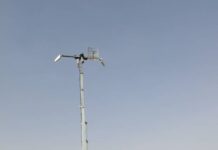On Tuesday, November 11, the webinar “From Design and Modeling to Operations: Practical Ground Control Management Plan (GCMP) for Active Mining Operations” will be held. This technical presentation will introduce a comprehensive management framework that links geotechnical design and modeling criteria with field operational controls, the Organizing Committee of the upcoming Slope Stability 2026 (SS2026) international conference announced.
Specialist Marco Arrieta, a geotechnical engineer with extensive experience in risk management and the mechanical behavior of granular media, will present the main guidelines of the Ground Control Management Plan (GCMP).
“Based on real cases from waste dumps and active faces, attendees will see how to turn safety factors, pore pressures, and runout into safe operational windows, thresholds, and triggers. They will learn how to integrate instrumentation, hazard maps, shutdown criteria, and compliance dashboards within a performance-based design (PBD) approach that maintains daily communication with operations,” Arrieta emphasized.
Who Should Attend?
The webinar is aimed at geotechnical teams, operations leadership, mine dispatch, safety leaders, planning/geology professionals, and anyone responsible for translating designs and model insights into daily operational controls.
“The presentation will highlight governance structure, hazard maps with operational windows, instrumentation and alerts, trigger-action-response plans (TARPs), communication flow, KPI dashboards, and a continuous improvement cycle that bridges the gap between engineering and operations,” the specialist added.
The webinar will take place at 7:00 p.m. through Slope Stability’s official YouTube, LinkedIn, Facebook, and Instagram accounts. Attendance is free upon prior registration via Zoom at the following link https://bit.ly/47mkUlT.
For more information, please contact programslopestability2026@speg.org.pe or http://wa.me/51941717905.
Slope Stability, one of the world’s leading events on mine slope stability, is organized by the Large Open Pit Project (LOP) and supported in Peru by the Peruvian Society of Geoengineering and the Peruvian Institute of Mining Engineers (IIMP).




